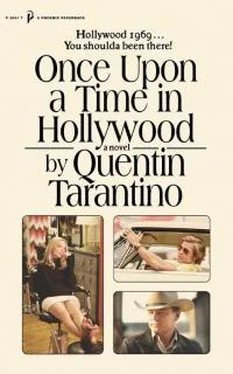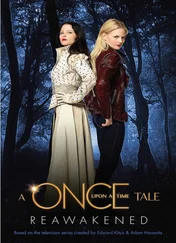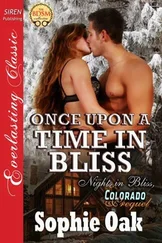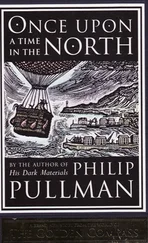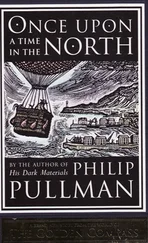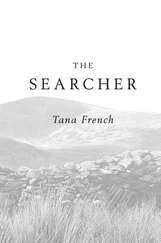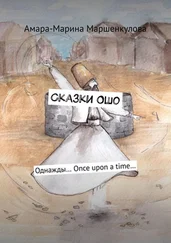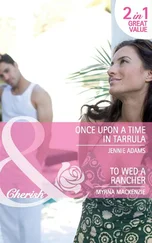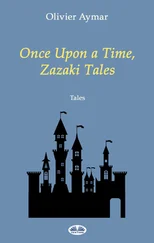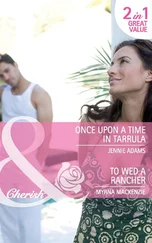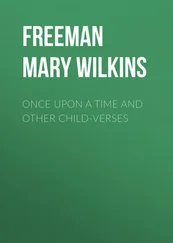Well, James Stacy scored one of the best episodes in the entire run of the series. Which, considering that Gunsmoke was one of the highest-quality shows of its day, is saying something.
The episode that James Stacy did in the thirteenth season of the series was entitled Vengeance . It was written by Calvin Clements, one of the great TV-western episodic writers of his time, and directed by Richard C. Sarafian, a talented episodic-TV director just before he made his leap to feature films with cult classics like Vanishing Point and Man in the Wilderness (Barry Newman is okay in his button-down white shirt and his Jew-fro as the Dodge Challenger driver Kowalski in Vanishing Point , but James Stacy would have been both way sexier and way cooler). Vengeance was a two-part episode that guest-starred Stacy, John Ireland, Paul Fix, Morgan Woodward, Buck Taylor (just before he joined the show as Marshal Dillon’s deputy Newly O’Brien), and Kim Darby one year before True Grit .
Stacy plays Bob Johnson, who along with his older brother, Zack (Morgan Woodward), and his foster-father figure, Hiller (James Anderson), are saddle bums riding the range. Being seasoned saddle tramps, they’re aware that the unwritten law of the range is that wounded calves must be slaughtered in order not to draw wolves to the herd. So, when riding through a herd of cattle they come across a wounded little animal, the three men do their duty and prepare to partake in a free steak dinner. That’s when the low-rent cattle baron Parker (John Ireland), flanked by his sons, his ranch hands, and his puppet sheriff (Paul Fix), ride up. The calf they found was Parker’s and was found on Parker’s land. The Johnson brothers try to explain the situation. But Parker deems them cattle rustlers.
They kill Hiller, paralyze Zack, and leave a wounded Bob for dead, with Parker’s bought-and-paid-for sheriff legally officiating over all of it (shades of The Ox-Bow Incident ).
Bob survives and gets himself and his brother to the nearby town of Dodge City, where series star U.S. Marshal Matt Dillon (James Arness) presides. Marshal Dillon informs the Johnson brothers that Parker owns his own town, called Parkertown, which was supposed to rival Dodge as a municipality. But where Dodge grew and became a stagecoach stop, Parkertown remained a one-dog town run by a wealthy family of Wild West Borgias. While Marshal Dillon believes the Johnson brothers’ story and knows full well that Parker is completely capable of doing what they claim, the fact remains they were on Parker’s land and it was Parker’s calf. And the sheriff who presided over the execution, although a weak-willed puppet of Parker, is the legal law of Parkertown. So, as unjust as it is, the execution was legal.
Marshal Dillon instructs Bob to sit tight and heal up from his wound and let Doc (Milburn Stone) care for his bedridden brother.
But what nobody in either Dodge or Parkertown knows is, Bob Johnson possesses a lightning-fast gun hand. Now, Bob is aware enough to know he can’t just go out and kill Parker and his sons without hanging for it. But he also knows he can bait Parker’s asshole son Leonard (Buck Taylor) into a gunfight, where he can kill him legally. So Bob starts running down the Parkers to everyone in Dodge, in order to lure Leonard into town. And Bob’s plan works. By playing a psychological game with Parker’s idiot son, he gets Leonard to draw on him in the middle of town, at a town dance, surrounded by practically every resident of Dodge City.
Legally shooting him dead.
Naturally, Parker and his men ride into town loaded for bear and demanding retribution. But Marshal Dillon informs the bloodthirsty cattle baron what’s good for the goose is good for the gander. While legally he couldn’t interfere with the initial murder over the calf, neither can he interfere with this killing, because Bob has the whole town as his witness that he was defending himself.
Nevertheless, Matt Dillon knows full well Bob orchestrated the whole damn incident. And he doesn’t appreciate saddle tramps coming into Dodge City and turning his main street into a killing ground for their own private vendetta. So he tells Bob that once his brother is fit enough to travel, he wants them the fuck outta Dodge. Unfortunately, Bob’s brother Zack will never leave Dodge. Parker sends an assassin in the night to murder Bob’s bedridden brother.
Everybody knows Parker is responsible, but proving it is another matter.
So as Vengeance, Part 1 comes to a close, we witness James Stacy (all alone) riding into the shithole known as Parkertown to face down John Ireland’s Parker and all his men.
Wow! What a cliffhanger!
Vengeance, Part 2 , also written by Clements and directed by Sarafian, picks up right where Part 1 left off. And what follows is one of the most exciting shootouts ever filmed for a sixties’ western television show. The beginning of Vengeance, Part 2 doesn’t feel like an episode of Gunsmoke but like the exciting climax of a terrific seventies’ revenge western movie.
What happens? What do you think? Bob kills every son of a bitch in that town.
Hooray! Fuck those motherfuckers!
And you don’t have to wait for it, it just happens— bam —right off the bat. Now, after the opening of Part 2 , as anybody familiar with the structure of a Gunsmoke episode could have told you, the show falls off a cliff. Because from that point on we know Matt Dillon’s going to have to kill Bob Johnson, and we just kill time waiting for it to happen. And then, just before the end, that’s exactly what happens. Stay tuned for scenes from next week’s exciting episode of Gunsmoke!
Every young budding leading man in town wanted to play Bob Johnson. Rick Dalton would have given his back molars to play the part. Instead, the week Jim Stacy shot Vengeance , Rick was fucking around on a botanical garden, wearing a pith helmet, playing scenes with a practically naked Ron Ely as Tarzan. But once you see the episode, it’s hard imagining anybody else but Jim Stacy.
Another storyline on the episode included Bob’s burgeoning romance with an innocent young Dodge City girl played by Kim Darby. On the show, Darby played a sweet girl who fell for the troubled rascal Johnson. And while filming the show, sweet girl Kim Darby fell for troubled rascal Jim Stacy. The two were married after filming and divorced a year later.
The suits at CBS knew they had a hot property in Stacy when they cast him in the coveted Gunsmoke guest-star slot. Now that they’ve seen the results, they are positive.
CUT TO Jim Stacy, dressed in Johnny Lancer’s sangria-red ruffled shirt with a brown leather short coat, sitting in a wooden chair out in front of the Hotel Lancaster on the Twentieth Century Fox western back lot, filming the first day of the pilot for his new series. His silver-studded legs stretched out before him, he takes sips from a tiny green bottle of 7 Up.
At that moment, he feels an ever-so-slight irritation. The reason is the sight of Rick Dalton’s mustache. When he first heard that Rick Dalton—Jake Cahill himself—was going to be playing the heavy Caleb DeCoteau on the pilot of his show, he was thrilled.
For a few different reasons. One, he’s always dug Dalton. Both on Bounty Law and in The Fourteen Fists of McCluskey (he also liked him in that western he did with Ralph Meeker, but he couldn’t remember its name).
Two, the fact that both Fox and CBS were spending the money to get a legitimate TV star to play the heavy in the pilot meant they were serious about the show’s potential. And from an ego standpoint, number three, the day had finally come where somebody like Rick Dalton was the heavy to Jim Stacy’s hero. It also was a dynamic way to launch his Johnny Lancer character. At the end, when Johnny defeats Caleb, he’s not just coming out on top with that week’s bad guy. The audience is going to see Johnny Lancer going up against Jake Cahill (an icon of western television) and Lancer emerging triumphant. He remembers discussing it with the pilot episode’s director, Sam Wanamaker. For the role of Caleb DeCoteau, it was between two choices. One was Dalton, the high-profile guest-star route. The other was an exciting young actor named Joe Don Baker, who had been one of the convicts in Cool Hand Luke and one of the seven in that last Magnificent Seven sequel with George Kennedy (Jim had read for the McQueen role but lost it to Monte Markham). And Wanamaker liked Baker. He looked like a movie actor, and Sam liked his size (Baker was bigger than Stacy). But the idea of taking a known TV cowboy and subverting his image was just too delicious for Wanamaker to pass up. Wanamaker didn’t want this series to look like Bonanza or The Big Valley or any of the dozen other sixties’ western shows on TV. The spaghetti westerns out of Italy had introduced a gritty new look that was finally catching up to their American counterparts. Yeah, there was still the Andrew McLaglen and Burt Kennedy–directed junk starring Wayne, Stewart, Fonda, Mitchum, and all the other old fucks who were still cranking out nostalgia-based vehicles for their ever-dwindling audience. But the American westerns of 1969 started having a different flavor. Partly in response to Eastwood’s startling sex appeal in the Leone westerns, the stars started being younger. They dressed with far more panache than was the standard wardrobe over at Western Costumes on Santa Monica Boulevard. And, more often than not, they fell into the “antihero” category. To such a degree, some of the older stars left over from the Eisenhower era sought to subvert their personas.
Читать дальше
